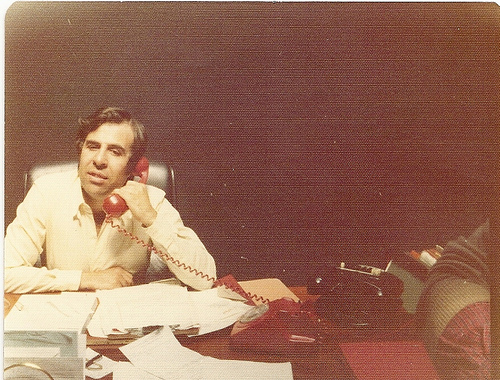‘A business model describes the rationale of how an organization creates, delivers, and captures value’. It is ‘a blueprint for a strategy to be implemented through organizational structures, processes and systems’ such that being able to manipulate business models enables you to ‘create new strategic alternatives’ for your organization – Business Model Generation, Osterwalder & Pigneur
They describe in their excellent book the 9 Building Blocks of a business model:
- Customer Segments – an organization serves one or several Customer Segments.
- Value Propositions – it seeks to solve customer problems and satisfy customer needs with value propositions.
- Channels – Value Propositions are delivered to customers through communication, distribution and sales Channels.
- Customer Relationships – are established and maintained with each Customer Segment.
- Revenue Streams – result from Value Propositions successfully offered to customers.
- Key Resources – are the assets required to offer and deliver the previously described elements…
- Key Activities – … by performing a number of Key Activities.
- Key Partnerships – some Activities are outsourced and some resources are acquired outside the enterprise.
- Cost Structure – the business model elements result in the cost structure.
You should be able to see from the definitions above the importance of your business model and how it is vital to keep it evolving to ensure that you maintain strategic and competitive advantage that translates into profit. Here are 8 ways to keep your business model evolving
- Beat yourselves – if you were your competition, but had your knowledge of your strengths and weaknesses, how would you annihilate yourself? Take these points of weakness and set aside time or allocate teams to materially change the business model building blocks in these areas. In parallel, take your points of strength and ask how you can double your effort in these areas to make yourself unassailable
- Create a customer collaboration culture by developing acute awareness of customer problems, the implications of these problems and the needs they create. Make customer collaboration a part of your brand by creating a subtle framework of rewards for collaborating and recognising the necessarily dynamic and evolving relationship you need to have with your customers. Most importantly, however, you need to know when not to listen.
- Be a fast second mover: imagine you were to gear up you business to specialising in being a fast second mover in your industry. What would you have to do? What processes change and what competencies do you have to develop? How does your competitive analysis and data have to evolve – and keep evolving. How much do you need to invest in your R&D and new product/ service development processes to ensure they can respond rapidly enough from potentially a standing start to market launch in 3-6 months?
- Blank sheet of paper – you now know a lot about your sector and could speculate on where you think it’s going to go. There will be a lot of things you love and probably hate about your company. If you had nothing to lose and you were going to start again, what would you do? However extreme it is, just get it down on a piece of paper. Now look at what you’d do. Why did you make that choice? What forces, trends and economic realities led you to your decision. How would your new businesses models adapt? Now look at what you can do of this new theoretical business in your existing business. Keep asking ‘why not?’, indeed don’t ask yourself, ‘why not do it within our current business?’, but ‘what happens to our current business longer-term if we don’t do this?’
- Extremely different industries: get a big sheet of paper and plot yourself and your competitors business models on one side. Then try and think of the most extremely different businesses in completely different sectors to yours. Brainstorm what business models they use. Use the [business model generation] template headings. Now take each of their business models and ask for each one they can’t be used by your business in your sector.
- Get back to what’s true: The best business models leverage what are the current truths for the best ways of operating your business in your sector at this point in time. There are also always underlying truths: the emotional needs you’re really solving for your customers. The values on which the business was originally founded. The reasons employees are originally attracted to your brand: what did they believe to be true about your business? List all these truths and then map them to your current business models. Are they truly leveraging all your truths in the best way? The way that really aligns with your original truths?
- Be explicit in your innovation culture: Include your business models explicitly as part of the keystone habits you’re looking to create in your innovation culture. As part of your communications around the creation of your innovation culture, be sure to clarify what business models are, and the 9 Building Blocks of a business model. This will help break down what innovation means for your team, and particularly the breadth of what makes up a business model and therefore what can be innovated
- ‘Surprise and delight’ – if your only business objective was to maximise your customer’s/ client’s satisfaction, where would this lead you? Use the words ‘surprise and delight’ to break out of the shackles of thinking about normal good levels of customer service. Forget about costs and profit for the moment. Ignore your current corporate skill sets and competencies. Just surprise and delight. Now look at the business you’d have created: what can you keep? What should you keep? Use this surprise and delight view of your business as a kind of blueprint to guide your evolution. Technology prices, cost structures and scientific limitations may stop you doing what your clients would love you to do, but if you keep trying at least you know you’re moving in the right direction.
Download the business model canvas and if you’re not already a subscriber, sign up to other updates on business model evolution by email below:
 Constant Mentor Goal Setting & Interventions for Leaders
Constant Mentor Goal Setting & Interventions for Leaders





